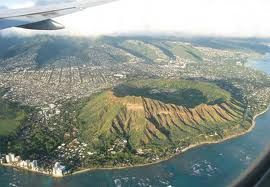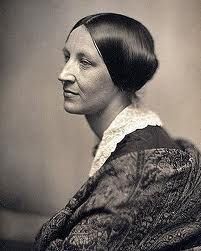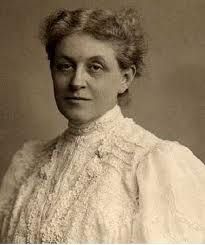This is your morning Open Thread. Pour your favorite beverage and review the past and comment on the future.
Find the past “On This Day in History” here.
August 23 is the 235th day of the year (236th in leap years) in the Gregorian calendar. There are 130 days remaining until the end of the year.
On this day in 1902, pioneering cookbook author Fannie Farmer, who changed the way Americans prepare food by advocating the use of standardized measurements in recipes, opens Miss Farmer’s School of Cookery in Boston. In addition to teaching women about cooking, Farmer later educated medical professionals about the importance of proper nutrition for the sick.

Farmer was born March 23, 1857, and raised near Boston, Massachusetts. Her family believed in education for women and Farmer attended Medford High School; however, as a teenager she suffered a paralytic stroke that turned her into a homebound invalid for a period of years. As a result, she was unable to complete high school or attend college and her illness left her with a permanent limp. When she was in her early 30s, Farmer attended the Boston Cooking School. Founded in 1879, the school promoted a scientific approach to food preparation and trained women to become cooking teachers at a time when their employment opportunities were limited. Farmer graduated from the program in 1889 and in 1891 became the school’s principal. In 1896, she published her first cookbook, The Boston Cooking School Cookbook, which included a wide range of straightforward recipes along with information on cooking and sanitation techniques, household management and nutrition. Farmer’s book became a bestseller and revolutionized American cooking through its use of precise measurements, a novel culinary concept at the time.
Cookbook fame

Fannie published her most well-known work, The Boston Cooking-School Cook Book, in 1896. Her cookbook introduced the concept of using standardized measuring spoons and cups, as well as level measurement. A follow-up to an earlier version called Mrs. Lincoln’s Boston Cook Book, published by Mary J. Lincoln in 1884, the book under Farmer’s direction eventually contained 1,849 recipes, from milk toast to Zigaras à la Russe. Farmer also included essays on housekeeping, cleaning, canning and drying fruits and vegetables, and nutritional information.
The book’s publisher (Little, Brown & Company) did not predict good sales and limited the first edition to 3,000 copies, published at the author’s expense. The book was so popular in America, so thorough, and so comprehensive that cooks would refer to later editions simply as the “Fannie Farmer cookbook”, and it is still available in print over 100 years later.
Farmer provided scientific explanations of the chemical processes that occur in food during cooking, and also helped to standardize the system of measurements used in cooking in the USA. Before the Cookbook’s publication, other American recipes frequently called for amounts such as “a piece of butter the size of an egg” or “a teacup of milk.” Farmer’s systematic discussion of measurement – “A cupful is measured level … A tablespoonful is measured level. A teaspoonful is measured level.” – led to her being named “the mother of level measurements.”
I still have my copy.



 Hawaii’s natural beauty, warm tropical climate, inviting waters and waves, and active volcanoes make it a popular destination for tourists, surfers, biologists, and volcanologists alike. Due to its mid-Pacific location, Hawaii has many North American and Asian influences along with its own vibrant native culture. Hawaii has over a million permanent residents along with many visitors and U.S. military personnel. Its capital is Honolulu on the island of Oahu.
Hawaii’s natural beauty, warm tropical climate, inviting waters and waves, and active volcanoes make it a popular destination for tourists, surfers, biologists, and volcanologists alike. Due to its mid-Pacific location, Hawaii has many North American and Asian influences along with its own vibrant native culture. Hawaii has over a million permanent residents along with many visitors and U.S. military personnel. Its capital is Honolulu on the island of Oahu. On this day in 1911, a dispatcher in the New York Times office sends the first telegram around the world via commercial service. Exactly 66 years later, the National Aeronautics and Space Administration (NASA) sends a different kind of message–a phonograph record containing information about Earth for extraterrestrial beings–shooting into space aboard the unmanned spacecraft Voyager II.
On this day in 1911, a dispatcher in the New York Times office sends the first telegram around the world via commercial service. Exactly 66 years later, the National Aeronautics and Space Administration (NASA) sends a different kind of message–a phonograph record containing information about Earth for extraterrestrial beings–shooting into space aboard the unmanned spacecraft Voyager II. allowed it to be kept in the plane of the Ecliptic (the plane of the Solar System) so that it could be sent on to Uranus and Neptune by means of utilizing gravity assists during its fly-by of Saturn in 1981 and of Uranus in 1986. Because of this chosen trajectory, Voyager 2 could not take a close-up look at the large Saturnian moon Titan as its sister space probe had. However, Voyager 2 did become the first and only spacecraft to make the spaceflight by Uranus and Neptune, and hence completing the Planetary Grand Tour. This is one that is made practical by a seldom-occurring geometric alignment of the outer planets (happening once every 175 years).
allowed it to be kept in the plane of the Ecliptic (the plane of the Solar System) so that it could be sent on to Uranus and Neptune by means of utilizing gravity assists during its fly-by of Saturn in 1981 and of Uranus in 1986. Because of this chosen trajectory, Voyager 2 could not take a close-up look at the large Saturnian moon Titan as its sister space probe had. However, Voyager 2 did become the first and only spacecraft to make the spaceflight by Uranus and Neptune, and hence completing the Planetary Grand Tour. This is one that is made practical by a seldom-occurring geometric alignment of the outer planets (happening once every 175 years). The rectangular two-and-a-half-mile track linked four turns, each exactly 440 yards from start to finish, by two long and two short straight sections. In that first five-mile race on August 19, 1909, 12,000 spectators watched Austrian engineer Louis Schwitzer win with an average speed of 57.4 miles per hour. The track’s surface of crushed rock and tar proved a disaster, breaking up in a number of places and causing the deaths of two drivers, two mechanics and two spectators.
The rectangular two-and-a-half-mile track linked four turns, each exactly 440 yards from start to finish, by two long and two short straight sections. In that first five-mile race on August 19, 1909, 12,000 spectators watched Austrian engineer Louis Schwitzer win with an average speed of 57.4 miles per hour. The track’s surface of crushed rock and tar proved a disaster, breaking up in a number of places and causing the deaths of two drivers, two mechanics and two spectators. It took 70 years of struggle by women of the Suffrage Movement headed by Susan B. Anthony to get this amendment passed.
It took 70 years of struggle by women of the Suffrage Movement headed by Susan B. Anthony to get this amendment passed. 
 Throughout the late 1850s, treaty violations by the United States and late or unfair annuity payments by Indian agents caused increasing hunger and hardship among the Dakota. Traders with the Dakota previously had demanded that the government give the annuity payments directly to them (introducing the possibility of unfair dealing between the agents and the traders to the exclusion of the Dakota). In mid-1862 the Dakota demanded the annuities directly from their agent, Thomas J. Galbraith. The traders refused to provide any more supplies on credit under those conditions, and negotiations reached an impasse.
Throughout the late 1850s, treaty violations by the United States and late or unfair annuity payments by Indian agents caused increasing hunger and hardship among the Dakota. Traders with the Dakota previously had demanded that the government give the annuity payments directly to them (introducing the possibility of unfair dealing between the agents and the traders to the exclusion of the Dakota). In mid-1862 the Dakota demanded the annuities directly from their agent, Thomas J. Galbraith. The traders refused to provide any more supplies on credit under those conditions, and negotiations reached an impasse. On this day in 1935, President Franklin D. Roosevelt signs into law the Social Security Act. Press photographers snapped pictures as FDR, flanked by ranking members of Congress, signed into law the historic act, which guaranteed an income for the unemployed and retirees. FDR commended Congress for what he considered to be a “patriotic” act.
On this day in 1935, President Franklin D. Roosevelt signs into law the Social Security Act. Press photographers snapped pictures as FDR, flanked by ranking members of Congress, signed into law the historic act, which guaranteed an income for the unemployed and retirees. FDR commended Congress for what he considered to be a “patriotic” act. After a three-month siege, Spanish forces under Hernan Cortes capture Tenochtitlan, the capital of the Aztec empire. Cortes’ men leveled the city and captured Cuauhtemoc, the Aztec emperor.
After a three-month siege, Spanish forces under Hernan Cortes capture Tenochtitlan, the capital of the Aztec empire. Cortes’ men leveled the city and captured Cuauhtemoc, the Aztec emperor.